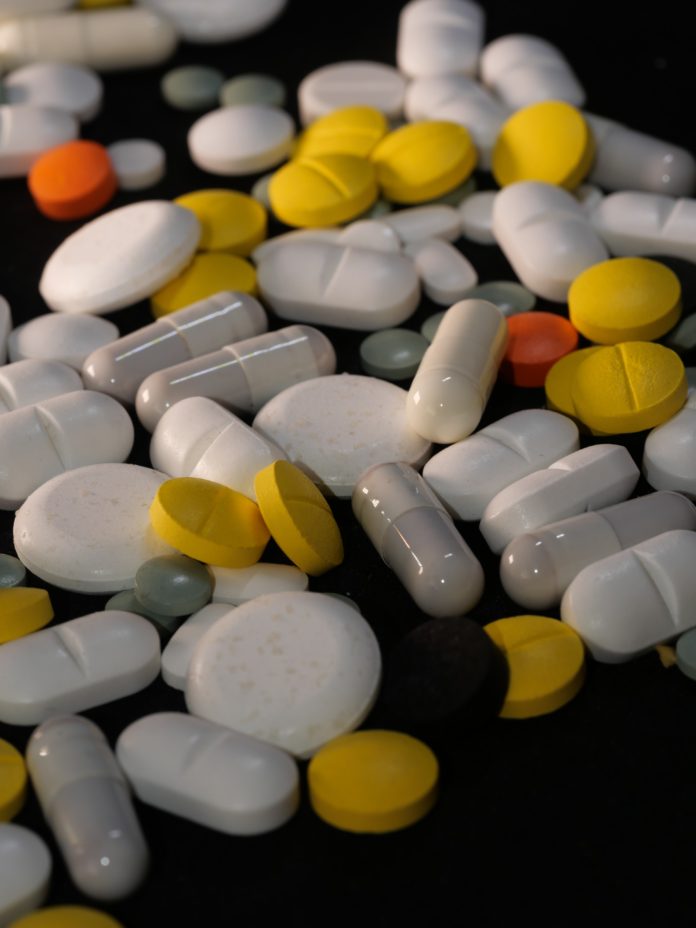By Aggrey Omboki
Nairobi, Kenya: Have you found yourself stopping at the local chemist to buy a couple of pills for that cold or flu?
If you bought the drugs without a prescription, then you and the chemist are contributing to the growing problem of antimicrobial resistance (AMR).
Kenyans have slowly adopted a culture of self-medication that stems from the tendency to use drugs that are generally seen to be effective due to frequent prescriptions by medics.
According to the World Health Organisation (WHO), Antimicrobial Resistance (AMR) occurs when bacteria, viruses, fungi, and parasites change over time and no longer respond to medicines making infections harder to treat and increasing the risk of disease spread, severe illness, and death.
The Lancet published a report on January 19, 2022, indicating that at least 1.27 million deaths per year are directly attributable to AMR.
New evidence also shows that AMR is a leading cause of death globally, with a death toll higher than HIV-AIDs and malaria.
Stubborn, drug-resistant infections killed more people than HIV/AIDS which caused 864,000 deaths, and malaria which was responsible for 643,000 deaths.
In 2019, the study estimates that 4.95 million people died from illnesses in which bacterial AMR featured. Of those, 1.27 million deaths were directly caused by AMR.
Six drug-resistant bacteria were responsible for about 80 percent of the 1.27m AMR deaths.
“AMR is truly a global problem that requires urgent action from policymakers and the health community to avoid preventable deaths,” Prof Mohsen Naghavi, who is a Professor of Health Metrics Sciences at the University of Washington in Seattle, told Nature magazine.
In Western Europe, AMR caused some 51,000 deaths in 2019 according to the report dubbed “Global burden of bacterial antimicrobial resistance in 2019: a systematic analysis”.
The leading pathogens in this region were Escherichia coli, staphylococcus aureus, Klebsiella pneumonia, E. Faecium, and Pseudomonas. Aeruginosa.
According to the Centres for Disease Control (CDC)’s report entitled “Antibiotic Resistance Threats in the United States, 2019”, Pseudomonas aeruginosa is a type of germ that can cause infections in the blood, pneumonia in the lungs, or disease in other parts of the body after surgery.
CDC notes that these bacteria “are constantly finding new ways to avoid the effects of the antibiotics used to treat the infections they cause”.
“Antibiotic resistance occurs when the germs no longer respond to the antibiotics designed to kill them. If they develop resistance to several types of antibiotics, these germs can become multi-drug-resistant,” the CDC warns.

In 2017, the CDC report notes that multidrug-resistant P. aeruginosa caused an estimated 32,600 infections among hospitalized patients and 2,700 estimated deaths in the United States.
According to www.merckmanuals.com, Enterococcus faecium and Enterococcus faecali can cause a variety of infections, including endocarditis, urinary tract infections, prostatitis, intra-abdominal infection, cellulitis, and wound infection as well as concurrent bacteremia.
“E. faecalis infections spread from person to person through poor hygiene. Because these bacteria are found in feaces, people can transmit the infection if they don’t wash their hands after using the bathroom. The bacteria can get into food or onto surfaces such as doorknobs, telephones, and computer keyboards,” reads the healthline.com web page dedicated to the microbes.
“Bacteremia or septicaemia, which is also known as blood poisoning, occurs when bacteria causing infection in another part of your body enters your bloodstream,” the health publication goes on.
According to the CDC, Acinetobacter baumanii is a microbe that can cause pneumonia or infections in the lungs, blood, and urinary tract or wounds in other parts of the body.
“A. baumanii can also ‘colonize’ or live in a patient without causing infections or symptoms, especially in respiratory secretions (sputum) or open wounds,” says the CDC. It was most prevalent in the Southeast Asia region alongside E.coli.
AMR is the direct cause of death for around 255,000 deaths in sub-Saharan Africa every year. Of these, 129,000 are deaths of children aged under five.
Leading pathogens or disease-causing organisms in the region include Klebsiella pneumoniae and Staphylococcus pneumonia.
Expected Interventions
The National Institutes of Health describes S.pneumonia as a “gram-positive, lancet-shaped bacterium and a cause of community-acquired pneumonia”, meaning that people with this type of pneumonia, which is difficult to treat, can spread the disease to others.
Speaking in Nairobi on May 24, 2022, Dr. Everlyne Wesangula confirmed that gram-positive bacteria are “much harder to treat than other types”.
Another 389,000 deaths occur due to AMR every year in South Asia. The leading pathogens here are Klebsiella pneumonia and E. coli.
Health website records that Klebsiella pneumoniae is a bacterium that normally lives inside human intestines without causing disease.
“If K. pneumoniae gets into other areas of the body, it can lead to a range of illnesses, including pneumonia, bloodstream infections, meningitis, and urinary tract infections,” reads the website.
In Southeast Asia, the report indicates that AMR causes around 97,000 deaths annually. The leading pathogens in this region are A.baumanni and E.coli.
The Latin America and Caribbean region is reporting at least 97,000 AMR-related deaths every year, with Staphlococcus aureus and E.coli being responsible for most of the mortality.
Dr. Evelyn Wesangula of the Ministry of Health is now advising Kenyans to be extra vigilant when treating common and rare ailments.
“AMR is responsible for more deaths than HIV and malaria. The WHO records the estimated number of malaria deaths at 627 000 in 2020. AMR on the other hand killed 1.27 million people in 2019, meaning that we need to take it much more seriously as a public health concern,” said Dr Wesangula.
Kenya is one of the six countries in Africa currently implementing a national action plan on monitoring and controlling AMR, according to WHO guidelines.
Dr. Wesangula admits the plan’s implementation is however beset by several challenges including lack of data, laboratories, staff, policies on AMR, and infrastructure challenges like lack of running water, electricity and waste disposal facilities for all.
It is not all doom and gloom as the country’s Pharmacy and Poisons’ Board (PPB) is alert for actions that will promote AMR.
On February 25, 2022, the board launched an investigation into the advertising and sale of amoxicyllin on a popular e-commerce website.
The adverts were pulled down after a storm of public criticism and subsequent orders by the PPB.
In an interview with The Star newspaper, PPB chief executive Dr. Fred Siyoi said investigations had been launched to ensure that appropriate regulatory action is taken against persons and parties involved.
“The board continues to engage with other regulatory agencies, specifically the Communications Authority of Kenya for interventions on non-compliant health products and technologies on e-commerce sites or domains,” Dr. Siyoi said.
Amoxycillin is a penicillin-based antibiotic commonly used to treat bacterial infections including pneumonia and bacterial flu, and is only available on prescription.
Repeated, haphazard, and unregulated use of the antibiotic can however result in the buildup of resistance in patients.
Amoxycillin’s irregular use is just one of the examples of drugs that are commonly purchased without prescriptions in the country.
Dr. Wesangula is now urging Kenyans to be much more mindful of the way they use antibiotics and other medication purchased over the counter.
Impact of AMR
“Over a million people are now dying each year due to infections such as lower respiratory, bloodstream, and inter-abdominal infections because bacteria have become resistant to treatment,” says the pharmacist who heads the Patient Safety Unit at the MoH.
Dr. Wesangula is the National Focal Point on AMR at the ministry, where she works to support the implementation of infection prevention and control interventions, surveillance activities, and antibiotic stewardship and awareness programs.
“Data clearly shows that AMR is threatening our doctors’ ability to carry out essential medical practice safely, including surgery, childbirth, and cancer treatment since infection is a risk following these procedures. Hospitals around the world are struggling to keep patients safe from hospital-acquired infections such as Staphylococcus aureus, which can cause pneumonia, heart valve, and bone infections” says Dr. Wesangula.

The situation, the medic explains, is further aggravated by the relatively slow pace of new drug discovery to plug the gap in treatment caused by the existing resistance posed by the bacteria.
“We are not innovating fast enough to develop effective vaccines medicines and treatments, leaving doctors and nurses in every country in the world unable to treat common infections. Out of the seven deadliest AMR bacteria, vaccines are only available for two, namely S.pneumoniae and Mycobacterium tuberculosis,” adds the medic.
She has also identified the overall lack of UN-recommended sustainable development goals (SDGs) achievement as a culprit in the surge of AMR-related deaths.
“The high number of deaths from AMR is a symbol of broader failures across the SDG achievement index. For example, lack of access to clean water and sanitation allows AMR to spread rapidly in a community and is one of the drivers of the high rates of resistant E.coli infections,” Dr. Wesangula says.
Next time you feel unwell, please see a doctor or clinical officer who will examine you and provide a prescription before you head off to the chemist to buy the drugs. Together, we can overcome AMR.














